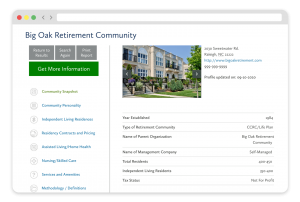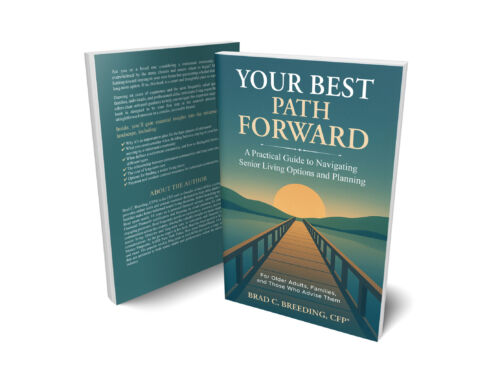Within Western culture, aging is often treated as something to resist. Consider the billions spent on products and procedures designed to fight wrinkles and graying hair. The media and entertainment industry even paint growing older as a slow fade into irrelevance in many cases. But what if the story we’re being told (and sold) about aging is fundamentally wrong? What if the “paradox of aging” is that our later years are often the happiest, most meaningful years of people’s lives?
Those are the provocative questions at the heart of psychologist Laura Carstensen, PhD’s research, which she discussed on a recent Hidden Brain’s podcast episode entitled, The Best Years of Your Life. (Listen to the August 11, 2025, Hidden Brain’s episode on Apple Podcasts or on Spotify.) They’re also essential questions to contemplate as the senior living industry develops retirement communities, programs, and services in the decades to come.
>> Related: Can Anti-Aging Research and Anti-Ageism Efforts Coexist?
A personal path to aging research
Dr. Laura Carstensen, co-founder and director of the Stanford Center on Longevity, first became interested in the experience of aging not in a classroom, but in a hospital bed.
At age 21, she survived a near-fatal car accident that left her immobilized and bedridden for months. Surrounded by older women in her hospital ward, she saw firsthand how different their experiences of aging were. Some were deeply lonely; others were cherished matriarchs of their family; and some were overlooked entirely.
That formative experience shaped Carstensen’s perspective and eventual career. She learned from that early adulthood hospital stay that aging is not a single story of decline. It is profoundly personal. It’s influenced by social connection, perspective, and how we use our time.
Now in her 70s herself, Carstensen has spent decades examining one of the main paradoxes of aging: Even as physical abilities decline, older adults commonly report more happiness, deeper relationships, and greater emotional stability than most younger people.
In her conversation with Hidden Brain’s host Shankar Vedantam, Carstensen explains that this paradox isn’t just a curiosity or anomaly. It’s a powerful reminder, both for individuals contemplating their next chapter of life and for the senior living industry, that what matters most as we age may not be what we expect.
>> Related: Practicing Gratitude Can Benefit Your Health
The science behind the paradox of aging
For decades, the dominant view in psychology was bleak: Old age meant inevitable depression, anxiety, and dementia. Yet landmark studies began to dismantle this narrative. Research showed that rates of depression and anxiety are typically lower in older adults than in younger and middle-aged adults. Within the podcast conversation, Carstensen discussed additional positive aspects of aging that have been uncovered by researchers.
Fewer negative emotions, more joy
In 2011, Carstensen and her team conducted a study that looked closely at the everyday emotions of people ranging in age from 18 to 94. “We found that increasingly, older people had fewer negative emotions — less anger reported, less fear, less disgust, and just as much happiness, joy, calm,” she recollects in the podcast.
Older adults often describe feeling emotionally lighter, more resilient, and more appreciative of daily life. But what is perhaps most surprising in Carstensen’s research over the years is that levels of positive emotions and contentment remain steady, and in some cases, even increase despite facing the physical challenges that often accompany aging.
Smaller circles, deeper bonds
As people age, their circle of friends naturally shrinks. But instead of being a loss, this refinement of people’s social group tends to be viewed as a gain by many people.
Carstensen has found that as we age, “the people who are retained in the networks are those that are most important, the people who are most predictable, most valuable in our lives.” The result is what Carstensen calls a “more emotionally dense” social world, with fewer superficial connections and more consistent, reliable support.
A shift toward the positive
Another hallmark of aging is what Carstensen and other researchers call the “positivity effect” in cognitive processing. She explains the concept like this: “Younger people pay more attention to negative stimuli than positive [sometimes called the ‘bad news bias’], and then gradually, that not only diminishes, but heightened attention to the positive emerges.” In other words: Older adults are more likely to focus on uplifting experiences and memories, while letting negative ones fade.
Brain imaging studies even show that older people pay more attention to positive images and events than negative ones. This tendency helps explain why, despite loss and change, many older adults feel more satisfied with life than they did in their earlier years.
Finding peace in the present
Another factor that leads to increased contentment among older people is their ability to savor life’s everyday moments. This may be in part due to their realization and acceptance of the fact that they have more days behind them than ahead. With this mindset, people may be more inclined to cherish the here and now, focusing on what truly matters in life.
On the other hand, “younger people are rarely in a present-focused mode,” observes Carstensen. “They’re almost always thinking about the future. Older people can actually be in the present, and that tends to be very good for mental health.”
This shift in focus can reduce stress and increase daily contentment. Being able to fully inhabit the here and now allows older adults to notice and appreciate simple joys … a favorite meal, a good conversation, or a beautiful sunset … without being weighed down by what’s ahead.
>> Related: Positive Aging: Changing Your Mindset About Growing Older
Rethinking what ‘aging well’ really means
If the science is clear that older adults are, on average, more emotionally resilient and more satisfied with life, why do we still treat aging as a crisis? Part of the answer lies in what our society, and by extension, the senior living industry, chooses to value.
Much of senior living and care is focused on and designed around safety, medical management, and decline prevention. These are, of course, essential, but they’re not the whole picture when it comes to aging well. As Carstensen’s research has found, nurturing older adults’ emotional wellbeing, purpose, and meaningful relationships may be every bit as vital to their quality of life as tending to their physical care.
For older adults
For those considering a move to an independent living retirement community or a continuing care retirement community (CCRC, also called a life plan community), don’t just look at the amenities, dining menus, and the floor plans.
A crucial question you must answer: Are you choosing a community that supports not just your lifestyle goals and medical needs, but also your desire for meaning, friendship, and joy? “Aging well” means finding a retirement community that blends all of these elements.
For the senior living industry
And for senior living industry professionals, the challenge is equally clear. The future of senior living isn’t only about adding new amenities or additional medical services. It’s about creating environments where residents’ lives can fully take root and bloom.
Those of us within the senior living and care industry must therefore ask: Are we building environments that truly reflect the many ways in which people flourish as they age? Or are we stuck fighting an all-too-common cultural narrative that aging is only about loss?
>> Related: A Healthy Aging Roadmap for the Senior Living Industry
A call to refocus on what matters as we age
The bottom line of the “paradox of aging” concept is actually really good news. As Carstensen emphasizes in the Hidden Brain’s podcast: Despite the aches, the gray hairs, and the oftentimes negative cultural messages, the reality is that most older adults feel more grounded, grateful, and content than ever before.
But realizing the full promise and potential of older adults’ later years requires a shift in how society, and the senior living industry in particular, thinks about aging. Industry leaders must ask:
- Are we prioritizing opportunities for residents to deepen their closest relationships?
- Are we designing spaces and programs that help residents savor the present moment?
- Are we embracing the wisdom and resilience that older adults bring, rather than focusing only on their day-to-day needs?
The science is clear that, for a majority of older adults, the so-called “declining years” are actually some of the happiest. The challenge now is to ensure our communities, our culture and policies, and our care models rise to meet the realities of aging. Indeed, the best years of life may not be behind us; they might just be unfolding right now.

FREE Detailed Profile Reports on CCRCs/Life Plan Communities
Search Communities






